Oral
Stroke & Blood Vessels
ISMRM & ISMRT Annual Meeting & Exhibition • 10-15 May 2025 • Honolulu, Hawai'i

| 16:00 |
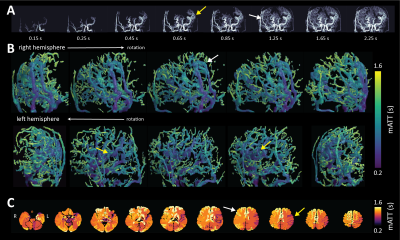 |
0273. Quantify
blood transit time in cerebral arteries using 4D-MRA with
example clinical application in moyamoya disease
A. Bhogal, S. Uniken Venema, P. Deckers, K. van de Ven, M.
Versluis, K. Braun, A. van der Zwan, J. Siero
University Medical Center Utrecht, Utrecht, Netherlands
Impact: This approach offers a non-invasive,
quantitative assessment of macrovascular dynamics, with
potential to enhance understanding of large-vessel and
tissue-level hemodynamics and augment monitoring of
treatment outcomes in steno-occlusive disease patients.
|
| 16:12 |
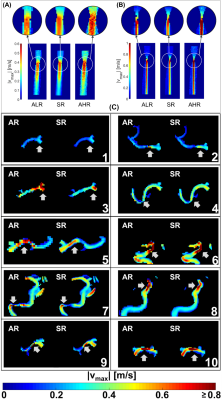 |
0274. Validation
of non-invasive pressure drop quantification in an in-vitro
stenosis phantom and patient cohort using DL-enhanced 4D Flow
MRI

A. El Ahmar, S. Schnell, S. Ansari, R. Abdalla, A. Vali,
M. Aristova, M. Markl, P. Winter, D. Marlevi
University of Greifswald, Greifswald, Germany
Impact: Deep learning-enhanced super-resolution 4D Flow
MRI, coupled with physics-informed pressure estimation,
enables precise, non-invasive quantification of pressure
drops across intracranial stenoses, advancing clinical
assessment of cerebrovascular disease and offering new
insights into the hemodynamic impacts of arterial stenosis.
|
| 16:24 |
 |
0275. Reduced
perivascular cerebrospinal fluid pulsation in patients with
ischemic stroke
Q. Wen, X. Zhou, C. Fu, B. Tian, C. Zhu
Indiana University School of Medicine, Indianapolis, United States
Impact: Our findings provide human evidence that
arterial stenosis reduces pCSF pulsatility, suggesting a
dual consequence for cerebrovascular conditions, affecting
both blood flow and CSF flow.
|
| 16:36 |
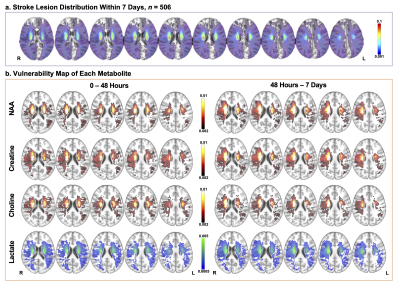 |
0276. Mapping
of Neurometabolic Vulnerability in Acute Ischemic Stroke Using
High-Resolution 3D MRSI

Z. Meng, C. Xu, B. Bo, T. Wang, H. Zhou, Y. Zhao, R.
Guo, Y. Li, W. Jin, Z-P Liang, P. Nachev, Y. Li
Shanghai Jiao Tong University, Shanghai, China
Impact: Neurometabolic vulnerability maps obtained in
acute stroke patients provide useful insights into cellular
vulnerability patterns that could inform more effective
stroke management.
|
| 16:48 |
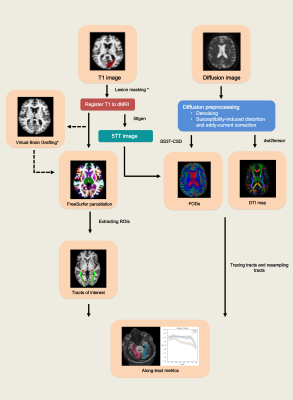 |
0277. White
matter integrity associated with residual ventral stream
function after posterior cerebral artery stroke
Y. Zeng, S. Ajina, A. Leff, M. Lambon Ralph, R. Starrfelt
University College London, London, United Kingdom
Impact: This study demonstrates that applying principal
component analysis to along-tract DTI metrics is an
effective approach to evaluate white matter integrity,
aiding in the assessment of ventral stream function loss
after stroke.
|
| 17:00 |
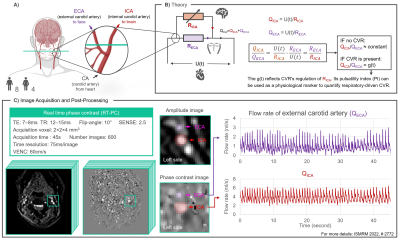 |
0278. Respiration
Can Trigger Cerebrovascular Reactivity: A New Method to Quantify
Respiratory-Driven CVR Using Real-time phase contrast MRI
P. LIU, Q. Wen, K. Owashi, O. Balédent
CHU Amiens-Picardie, University Hospital, Amiens, France
Impact: This study introduces a new, effective method
for measuring respiratory-driven CVR, comparing results
across two different breathing modes. It provides crucial
methodological support and reference data for clinical and
physiological research.
|
| 17:12 |
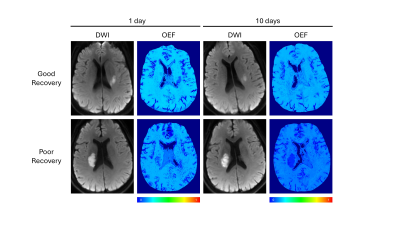 |
0279. Dynamic
Changes in Oxygen Extraction Fraction as a Predictor of
Long-Term Recovery in Ischemic Stroke Patients
Q. Boyer, D. Wu, S. Zhang, J. Cho
University at Buffalo, Buffalo, United States
Impact: This study demonstrated the feasibility of
QQ-based OEF mapping as a predictive tool for ischemic
stroke recovery, enabling clinicians to integrate early OEF
measurements into treatment decisions, potentially improving
patient outcomes.
|
| 17:24 |
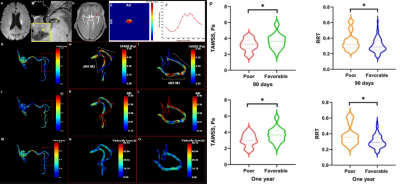 |
0280. Hemodynamics
of distal cerebral arteries are associated with functional
outcomes in symptomatic middle cerebral artery ischemic stroke
P. Jiang, L. Liu, X. Xu, Y. Zheng, J. Chen, H. Qiao, L. Lin,
B. Sun, X. Zhao, H. Wang, Z. Chen, Y. Xue
Fujian Medical University Union Hospital, Fuzhou, China
Impact: Segment-level TAWSS, RRT of dM1/2 segments may
be helpful to facilitate the differentiation of poor and
favorable functional outcomes. Our results imply the
potential values of distal segment-level hemodynamic
parameters derived from 4D flow CMR for the prognosis of IS.
|
| 17:36 |
 |
0281. A
compact approach combining Multi-Delay pCASL with short and long
delays for clinical applications
M. Obara, O. Togao, T. Wada, C. Tokunaga, L. Václavů, M. J.
van Osch, S. Ishida, Y. Ueda, M. Yoneyama, J. Kwon, M. Van
Cauteren
Philips Japan, Tokyo, Japan
Impact: Hybrid MD-ASL was shown to cover short to long
delays and demonstrated superior in terms of higher SNR,
measuring reasonable quantitative parameters, and scan time.
Use of the scheme in neurovascular and neuro-oncology
applications is expected to be advantageous.
|
| 17:48 |
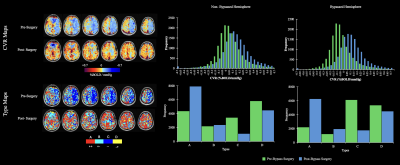 |
0282. Grading
the success of revascularisation surgery
E. S. Sayin, A. Jonnalagadda, J. Duffin, J. Poublanc, D.
Mikulis, J. Fisher, O. Sobczyk
University of Toronto, Toronto, Canada
Impact: Our CVR analysis grades the hemodynamic
disruption, maps its distribution, and quantifies the
efficacy of the intervention.
|
The International Society for Magnetic Resonance in Medicine is accredited by the Accreditation Council for Continuing Medical Education to provide continuing medical education for physicians.